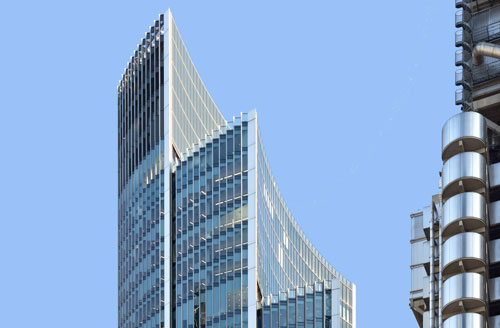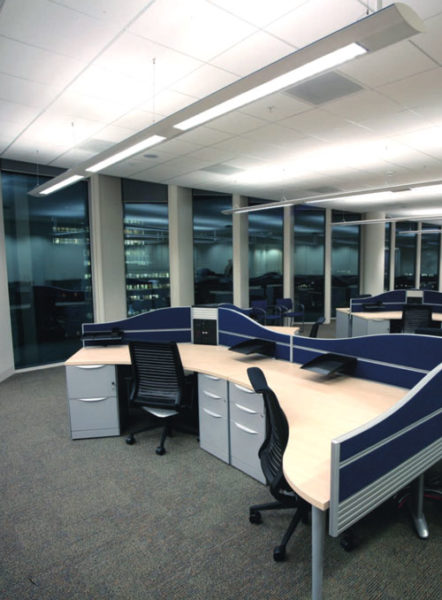Insurance firm reuses lights

A LEADING insurance company has reused 1,400 luminaires in a refurbishment at its City of London headquarters.
Standing 127m and 30 storeys tall, 51 Lime Street, also known as the Willis Building, is one of the most distinctive building on the capital’s skyline.
It was the first building to be BREEAM Excellent rated. Now the company is continuing the environmental legacy with a sustainable lighting refurbishment which has seen 1,400 luminaires upgraded and reused, leading to a 39 per cent energy reduction.
 Kent-based FUTURE Designs, the original supplier of the lighting, developed a new gear-tray design which used the latest optics to give the appearance of a fluorescent but with the benefit of LED.
Kent-based FUTURE Designs, the original supplier of the lighting, developed a new gear-tray design which used the latest optics to give the appearance of a fluorescent but with the benefit of LED.
It photometrically testing prototypes to ensure correct light levels and distribution were achieved.
Reusing the luminaire housing saves 19.4 tonnes of steel being produced.
This equates to 36 tonnes of carbon, the equivalent to running an average car for 172,615 km.
FUTURE Designs estimates at some 275 tonnes of carbon will be saved over a five year period.
There was a 200 per cent increase in lamp life
The lighting upgrade is a part of wider wave of fluorescent-to-LED refurbishments across the commercial sector. By replacing the gear tray with an LED source and driver, the same body can be used, and the luminaire can remain the ceiling, minimising disruption to the building’s occupants.
The project is part of Future Designs’s carbon careful™ initiative, its circular economy strategy.
The company says that it has pioneered the refurbishment and upgrading of existing luminaires and carcasses for over 12 years.
Most projects involved the transformation of the fittings with LED gear trays.
Future Designs chief executive David Clements told the Circular Lighting Review: ‘LED has been the lighting medium of choice for over 10 years now but there are still millions of old fluorescent fittings being used to illuminate space.
’By switching to LED, energy and carbon usage can be reduced by circa 50 per cent, coupled with the reuse of mild steel and aluminium, the savings are significant.
- Recolight offers special one-day training workshops on ‘Lighting product design for a Circular Economy’. Hosted by industrial designer Simon Fisher of F Mark, the CPD-accredited event explores the design criteria, regulations and standards to help lighting manufacturers apply and demonstrate circular economy principles in product development. More HERE.


